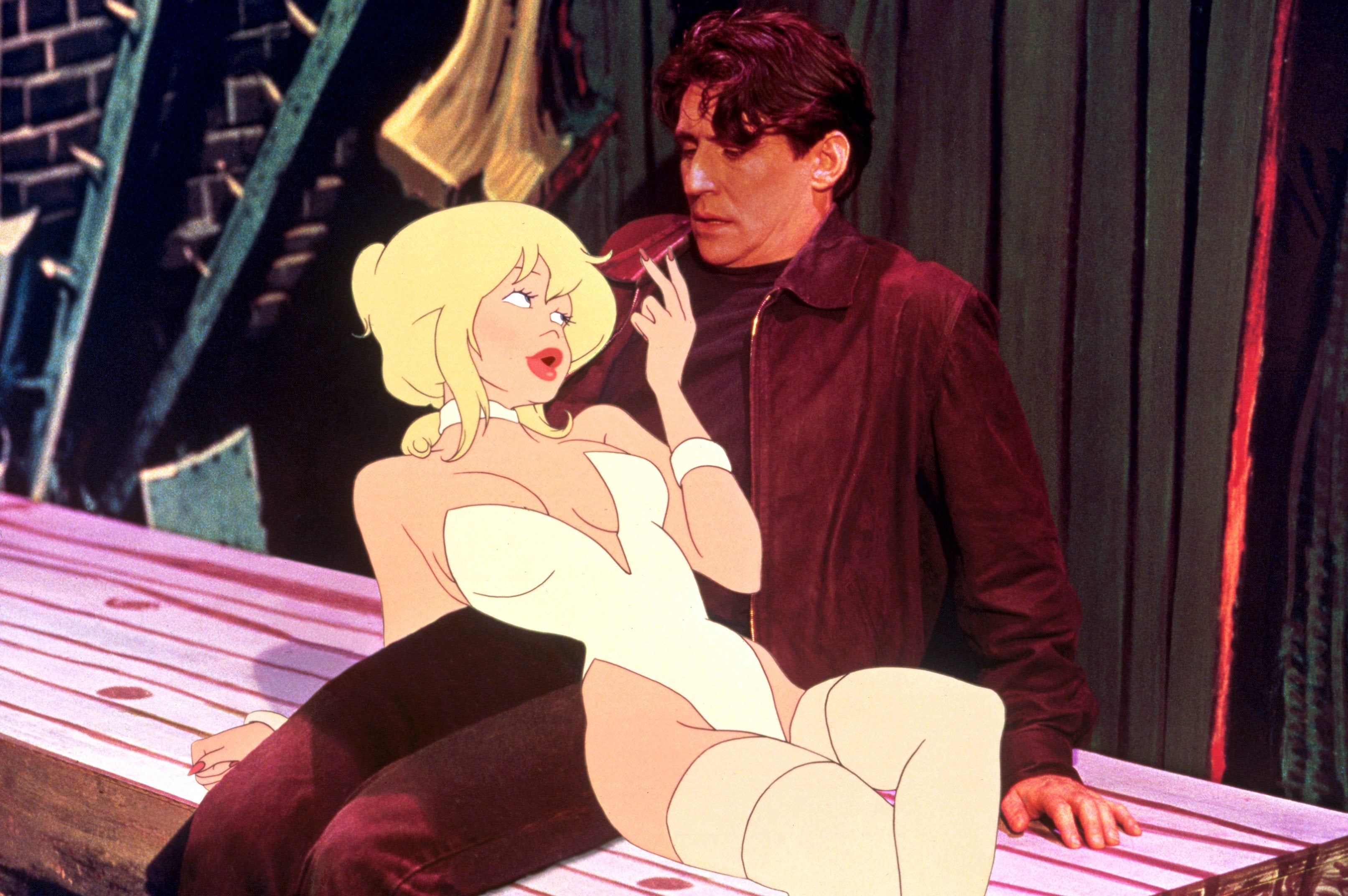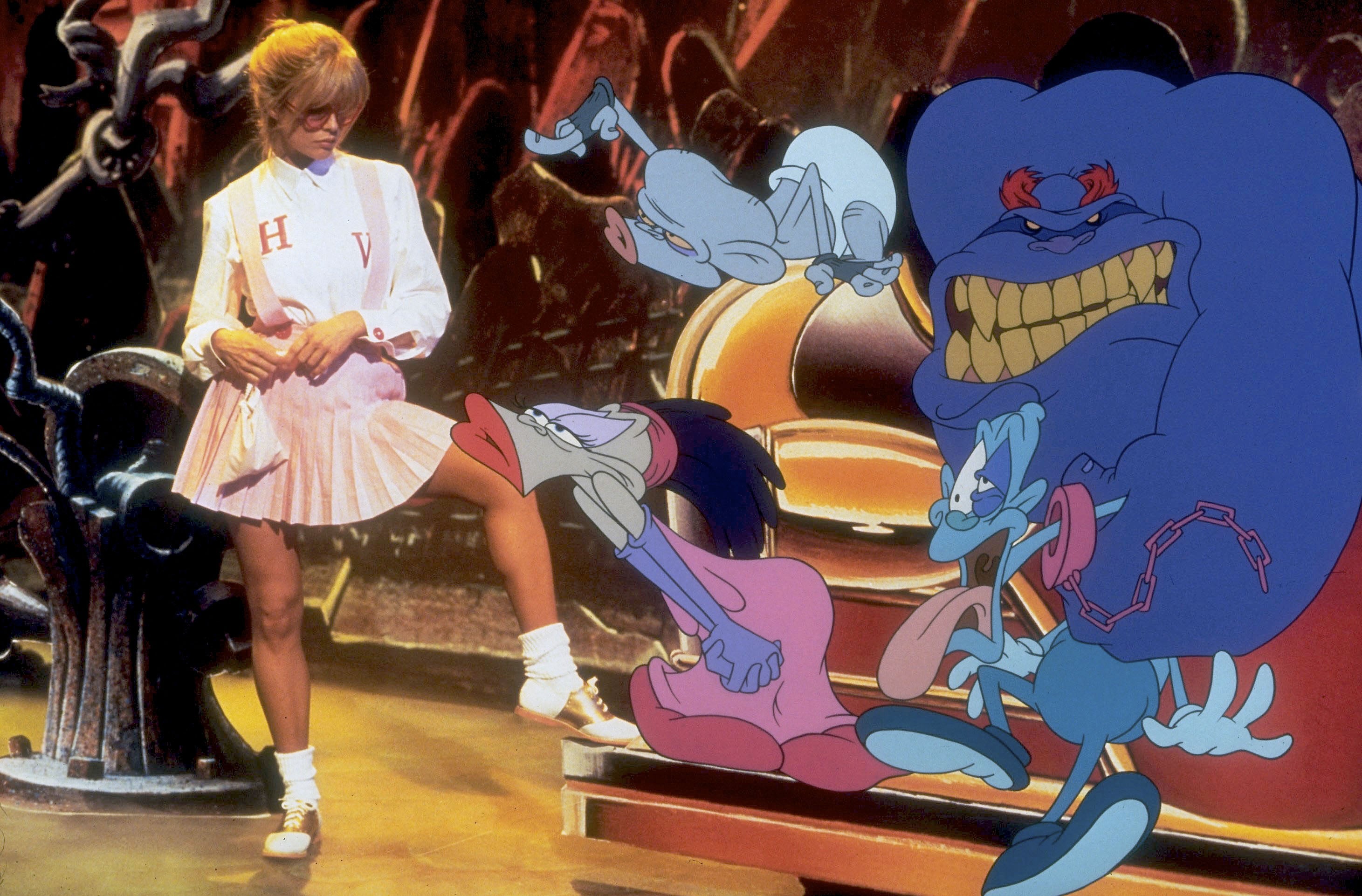
Hollywood may have a long and storied tradition of visionary directors coming to blows with meddling producers, but Ralph Bakshi would like to make clear he’s not part of it. “I never punched Frank Mancuso Jr,” says the 83-year-old pioneer of independent animation, speaking over the phone from his home “on top of a mountain” in New Mexico. “That was just a rumour. I yelled at him a couple of times, but that wasn’t his fault. I like Frank. I never punched him. Can you set that straight?”
Thirty years ago, the joint forces of Bakshi and Mancuso Jr were responsible for unleashing Cool World into cinemas. It was a wild, weird and subversive blend of live action and animation about an underground cartoonist who has sex with one of his own creations and causes all hell to break loose. Released four years after the runaway success of Who Framed Roger Rabbit, its cast list including Brad Pitt, Kim Basinger and Gabriel Byrne, Cool World set out to shock and titillate a more adult audience. “It’s like Roger Rabbit on acid,” Pitt told Details magazine in 1992. “It’s much more twisted. It’s got an underground comic-book feel.” Blighted by a pained production and incompatible competing visions, the film never quite lived up to that promise. It received a critical mauling, with Roger Ebert calling it “a surprisingly incompetent film" and reviews aggregator Rotten Tomatoes totting up a measly average score of just 4 per cent. At the box office, Cool World sank like a cartoon anchor, making back just half of its $28m budget.
For Bakshi, that was the moment he knew his time in Hollywood was over. His career had begun two decades earlier in 1972 with Fritz the Cat, the first X-rated cartoon film in history. Based on the underground comic strip by Robert Crumb, Fritz tells the tale of a womanising, pot-smoking alley cat who drops out of college, inadvertently starts a race riot and winds up as a leftist revolutionary. The film was a huge success, grossing $90m against a budget of just $700,000, and it revolutionised the Disney-dominated world of animation. Fritz’s transgressive antics went on to influence and inspire generations of cartoons for grown-ups such as The Simpsons, South Park and Rick and Morty. “The great thing about Fritz, to my mind, was that it was the total destruction of what everyone thought animation was,” says Bakshi. “It was about reality, as opposed to fantasy. We were using animation as an art form.”
The success of Fritz allowed Bakshi to spend most of his career running his own studio, Bakshi Productions, which saw him create groundbreaking animated films like 1973’s semi-autobiographical Heavy Traffic and his 1978 version of The Lord of the Rings, the first time the epic books were adapted for the screen. Bakshi’s version featured the vocal talents of John Hurt and C-3PO actor Anthony Daniels, and was credited as a key visual influence on Peter Jackson’s eventual live action films.

When it came to Cool World, however, Bakshi decided it was about time he got into bed with a major studio. “I went to Paramount to become a big shot director,” he explains with a self-deprecating laugh. “I wanted to get the big money, like the big guys. [Francis Ford] Coppola was my friend, [Martin] Scorsese was my friend, and these guys were getting millions while I was getting a million for an entire picture. I wanted what they had, but I’d totally forgotten that I was an artist, and I totally took for granted how wonderful [being independent] really was.”
During one particularly memorable meeting at Paramount, Bakshi pitched his vision of an adult horror film about an underground cartoonist who has sex with one of his creations, resulting in the birth of a child. “The kid was very strange and very perverted,” explains Bakshi of his original conception of Cool World. “Visually the kid would have been half-animated and half-live. I didn’t know how I was going to do that, but I was going to try.” The idea was quickly snapped up by Mancuso Jr, the son of Paramount chairman and CEO Frank Mancuso Sr.
“His father ran the whole company, so he got whatever he wanted,” says Bakshi. “I thought, ‘Well this is almost as good [as running my own studio].’ But what I never realised was that the studio and producers have the say creatively. As director, for the most part, you’re a production manager [which] leads to them getting whatever they want!” He laughs ruefully. “It took me a while to understand it. I used to get furious and bang off the walls, but I was much younger then. The script was rewritten, which is a producer’s right. It was rewritten [by screenwriter Larry Gross] to be much gentler, with a younger approach.”

As well as changes to the script, there were also disputes over casting. Bakshi was determined to feature a relative unknown called Brad Pitt. “The studio didn’t want him, they didn’t know who he was,” says Bakshi. “They said if I wanted Brad Pitt then I would have to take Kim Basinger, who’s a beautiful woman but a little old for the role. What I saw was a girl, somewhere around 20, who dances very well. Then they got Gabriel Byrne. I love Gabriel but he’s also a little old for an underground American cartoonist. I came from the underground, and we were all 20-25 when we were doing Fritz. Plus there was Star Wars. One of the interesting things about the younger directors – me, [George] Lucas and Scorsese – was that we saw actors much younger than Hollywood did. They saw them as much older and mature, in that star tradition.”
But even the established talent struggled with a revised script that was never quite sure of the story it was trying to tell. Pitt plays Frank Harris, a soldier who returns to Las Vegas from the Second World War in 1945 only to immediately suffer a tragedy and find himself transported to the “Cool World”, an animated alternate universe. There he is known as a “noid”, while the cartoon inhabitants are “doodles”. He lives on, unaging, until 1992, when Byrne’s cartoonist Jack Deebs – who believes he created “Cool World” – also makes the journey between worlds. Harris is by then working for the Cool World police, employed to enforce the one real law of the place: “Noids do not have sex with doodles”. Yet even Harris’ best efforts can’t keep Deebs from the dangerous embrace of Basinger’s bombshell Holli Would. Disaster ensues, and a sea of depraved doodles are unleashed on real-life Vegas. “I know this sounds crazy,” Pitt said at the time, trying his best to explain the film’s premise. “Sounded crazy to me, too.”
While the plot that made it to screen is undeniably a mess, there’s still plenty to make Cool World fascinating and rewarding viewing. Bakshi’s dark and dystopian vision of the Cool World itself is brought to life in lavish, nightmarish backdrops that are true works of art, achieving Bakshi’s dream of creating a “living painting”. Meanwhile, in the foreground gorgeous, twisted animations often fill the screen with little relation to what’s actually going on in the story. “I used to disparage it, but not anymore,” says Bakshi. “Cool World has some of the best animation I’ve ever done.”

By the time the film was released on 10 July 1992, Bakshi knew he was done making movies. He had already felt burnt out before Cool World, which is why he’d wanted to work with Paramount in the first place. “I wanted the studio to protect me,” he explains. “They said: ‘Okay, we’ll protect you, but you’re gonna have to collaborate…’ I hate to collaborate!” He lets out a low laugh. “If you’re an artist, you don’t collaborate! Now I understand what Marty [Scorsese] was saying. I used to go over to Marty’s house at night and he was talking about script control, biting his nails because he wanted this in and they wanted that in.”
Bakshi, who had made his name because of his uncompromising vision, decided he was done with working with other people. “Basically I was always just a cartoonist,” he says of his decision to move to New Mexico and focus on painting and illustration. “I wasn’t born to be a director, so I went home to be a cartoonist. I said: ‘F*** it! I don’t need this anymore.’ All the parties and all the coke were way back in the distance, so I just gave it all up and haven’t made a film since.”
‘Cool World’ is available to stream on Amazon and YouTube. ‘The Cool World: Collector’s Edition’ Blu-ray will be released on 13 September







